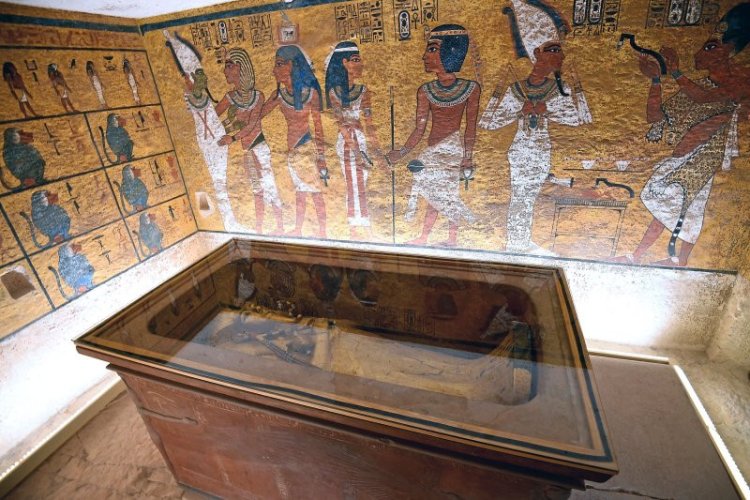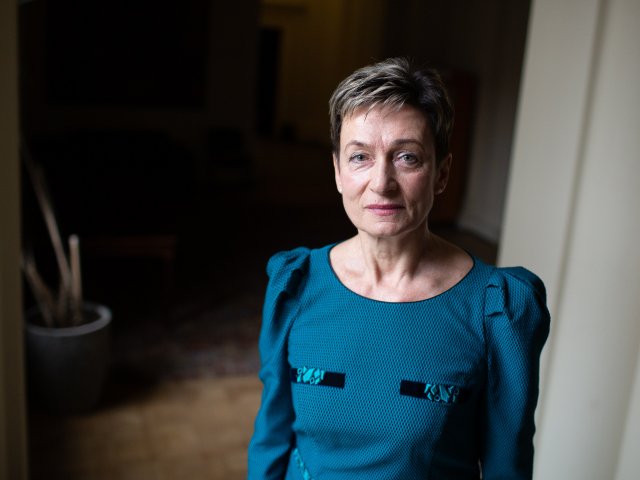On July 5th, 1881, Egyptologist Emil Brugsch discovered an ancient Egyptian tomb with graves of pharaohs. The uniqueness of his discovery was that dozens of sarcophaguses with pharaoh mummies were found in a burial chamber located in the rocks of Deir el-Bahri east of the famous Valley of the Kings, including those of Seti I, Amenhotep I, Thutmose III and the legendary conqueror Ramses II the Great. From inscriptions inside the tomb the scientist was able to determine when it was filled with graves: about 1110 BC.
The Cairo Museum is a large repository where the largest collection of artifacts of the ancient Egyptian era is found. The building is located in Tahrir Square in the center of the Egyptian capital. By now it has amassed a collection of more than 160,000 exhibits. Thanks to the Emil Brugsch’s unique find, the whole world can see the miraculously preserved remains of the greatest rulers of ancient Egypt.
The place where the burials were discovered, the Valley of Kings, is a rocky gorge that was used specifically as a final resting place for the pharaohs. The burial site is comprised of two parts. In the eastern part there are crypts of ancient Egyptian rulers. The western part accommodates a smaller number of tombs.
Since the late 18th century, the Valley of the Kings has been the center for treasure searchers, archaeologists and Egyptologists. It has earned its fame with the discovery of Tutankhamun’s grave. In 1979, the Valley of the Kings has been designated a World Heritage Site by UNESCO.
According to historical data, in ancient times the Valley of Kings was called “Ta sekhet aat” meaning “Great Place.”
All corridors and tomb premises have symbolic names associated with the afterlife of the pharaohs: the “sanctuary of the abode of the deities of east and west” (the corridor), the “waiting room” (a drainage shaft) and the “golden house” (the burial chamber). Unique paintings and painted relief sculptures decorated the interior of each room. Gilded frescoes depicted rulers in a detailed description of their presence in front of gods and spirits.
Egyptologists generally attribute the likely choice of the burial location to three reasons:
- The area was isolated from other parts of the Theban necropolis, making it easier to guard it.
- Here, on the west bank of the Nile, there was a natural horizon known as akhet – a place where the sun sets.
- In addition, the Valley is at the base of a grand mountain known today as El Kurn, its shape resembling a natural pyramid.
“Generation after generation the regal burial processions moved here because of the funerary temples located in the valley of the river, imitating the movement of the setting sun. Over the history of the New Kingdom, there had been some changes in the design of pharaohs’ tombs. Tombs of the XVIII dynasty had a corridor turning at right angles, such as the ones in the tomb of Thutmose III and Amenhotep II. Tombs of the XIX dynasty kings (Ramses II or Seti I) featured a straight corridor expanding into rooms along its axis: pillar halls, treasure vaults, a shaft and a burial chamber. The third tomb design (Ramses III of the XX dynasty) appeared almost identical, the exception being that tombs were carved in uppermost layers of soft limestone and shale to save money and time,” the history of Ancient Egypt tells.
The total number of pharaohs’ tombs in the Valley of Kings was 65. Thutmose I (XVIII dynasty) was the first pharaoh buried and Ramses XI (XX dynasty) was the last one.
The article is based on open sources.
Photo on the homepage: Mohamed el-Shahed/AFP






















